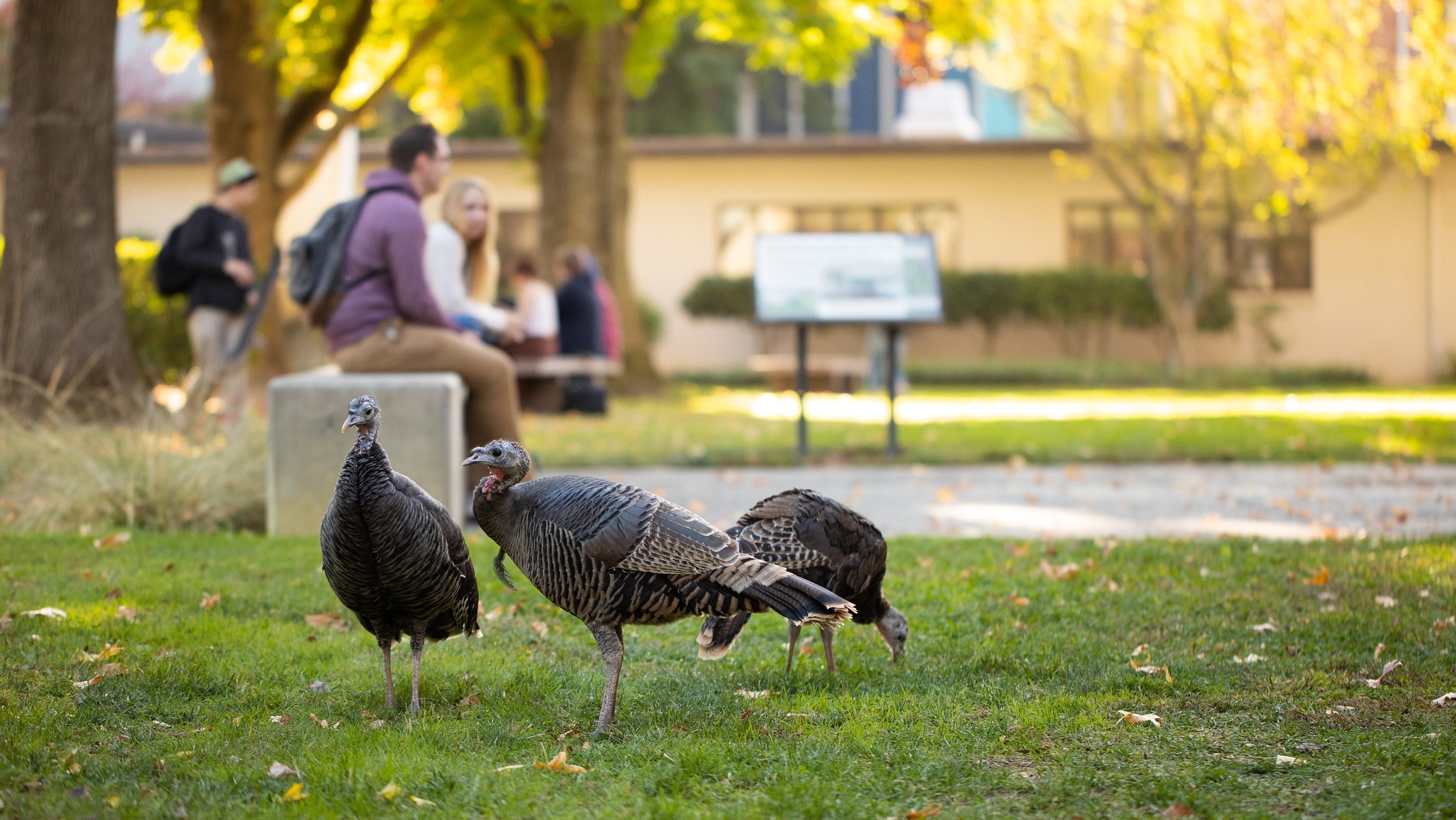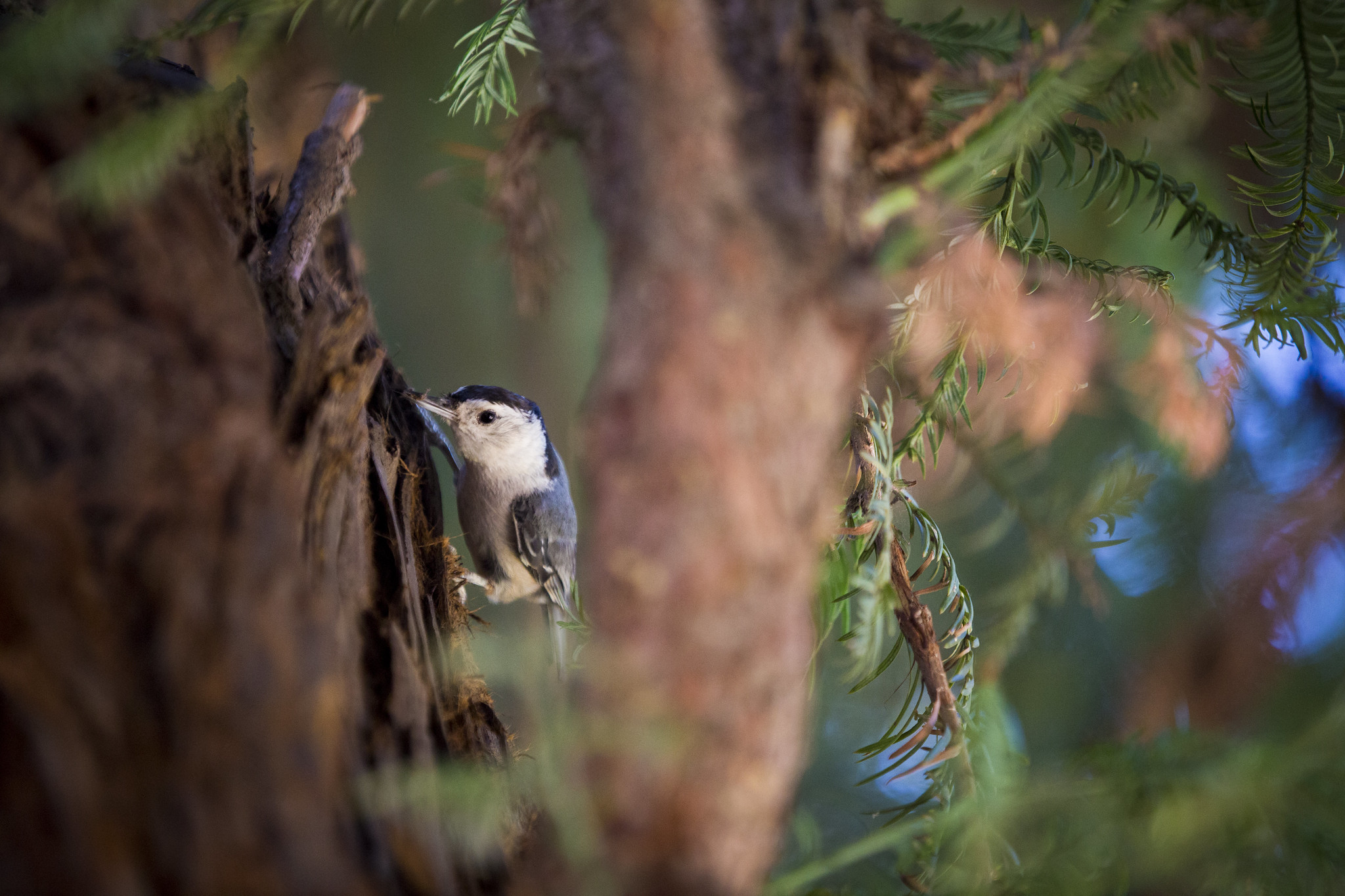 Even when people are on campus in large numbers, animals such as wild turkeys are a regular part of the scene. Sacramento State's commitment to maintaining wildlife habitat has earned it national recognition. (Sacramento State/Andrea Price)
Even when people are on campus in large numbers, animals such as wild turkeys are a regular part of the scene. Sacramento State's commitment to maintaining wildlife habitat has earned it national recognition. (Sacramento State/Andrea Price)
By Dixie Reid
From the turkeys that parade across campus and 100,000 honeybees living at the BAC Yard, to the iconic squirrels with nearly 1,000 Instagram followers (#squirrelsofsacstate), and even the occasional coyote, Sacramento State is alive with animal activity.
The University’s commitment to provide a nurturing natural environment has earned it Garden for Wildlife certification from the National Wildlife Federation (NWF).
NWF’s Garden for Wildlife is the largest and longest-running movement dedicated to helping wildlife and preserving wild spaces. The idea is for a community to build a sustainable environment that offers food, water, and shelter from predators, and a safe place for all to raise their young.
 The University's vast tree population creates well-used living space for birds and other animals. (Sacramento State/Andrea Price)
The University's vast tree population creates well-used living space for birds and other animals. (Sacramento State/Andrea Price)“We are so proud to recognize you as a friend of wildlife who is helping birds, butterflies and other local wildlife,” said NWF naturalist David Mizejewski. “Your certification puts us one habitat closer to the Million Pollinator Garden Challenge," a national effort to preserve and create gardens and landscapes that help revive the health of bees, butterflies, birds, bats and other pollinators.
Before submitting its application, Sac State already had thriving wildlife spread across the 300-acre campus.
The University qualified for certification by, among other attributes: having more than 3,500 mature trees, scattered pockets of dense brush, rain gardens, water-saving landscaping, and thousands of native plants; adopting the practice of recycling leaves and grass cuttings into compost; and maintaining the University Arboretum and the BAC Yard (officially the Bioconversion & Agricultural Collaborative). The American River that runs alongside campus also is a natural water source and habitat.
In addition, Sacramento State is in the process of creating a formal integrative pest management plan, which will utilize native plants and ground cover to reduce pesticide use, on the way to reaching the University’s goal of eliminating pesticides and chemical fertilizers on campus.
“We’re in a park, so it’s not surprising that we met all of the criteria,” said Ryan Todd, Sac State’s director of Energy & Sustainability, referring to the University's verdant setting.
“It means that our campus caters to animals and fosters successful wildlife, as opposed to putting up buildings everywhere," Todd said. "Based on what we already do, the campus is a natural environment that promotes wildlife coming in, being successful, and reproducing.”
The BAC Yard itself has many features that make it a haven for wildlife. “The aquaponics system is a constant source of water for the bees,” said Josh Maddox, energy and sustainability coordinator. “The orchard and flowering plants provide food for birds, bees, and insects, and the natural vegetation provides cover.
“With the campus being less populated (by humans) these days because of COVID-19, we’re seeing an abundance of young turkeys, geese, squirrels, hawks, and the occasional coyote.”
James Fox, a student assistant in Sac State Sustainability, took the lead in documenting the campus’ assets to land the NWF’s wildlife certification.
"It makes me feel good that I’m attending and working at a school that is so passionate about preserving and protecting the environment,” said Fox, a Parks & Recreation major with an emphasis on outdoor recreation and parks management.
“Our campus is not just rich in diversity and culture, but also in the plant life and tree species that provide the necessary habitat for wildlife.”
